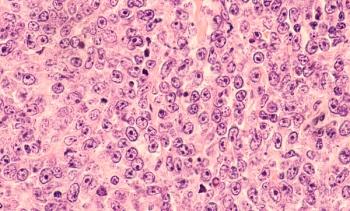
Study Finds CAPS Effective in Predicting In-Hospital Mortality in Patients With AECOPD
A prospective study found that a chronic obstructive pulmonary disease (COPD) and asthma physiology score (CAPS) of at least 21 points was a risk factor for in-hospital mortality in patients with acute exacerbations of COPD (AECOPD).
A study published in the
CAPS, a physiological scoring system devised in previous research, comprises 8 measures—heart rate, mean arterial blood pressure, pH, sodium, urea, creatinine, albumin, and white blood count. Prior studies have demonstrated its use in predicting hospital mortality, but the current study aimed to determine its predictive value specifically in patients with AECOPD.
The study was conducted at the respiratory medicine department of the Third Affiliated Hospital of Guangzhou Medical University in Guangzhou, China. All patients who were admitted from September 20, 2016, to June 10, 2019, were screened for this study. All patients had received a diagnosis of COPD according to the Global Initiative for Chronic Obstructive Lung Disease (GOLD) criteria, and the primary diagnosis of all participants upon admission had to be AECOPD.
All patients were followed up by telephone every 3 months for 1 year after hospitalization. Exclusion criteria included interstitial lung disease, lung cancer, active pulmonary tuberculosis and other lung diseases, malignancy, and not providing spirometry data.
Demographic and clinical data of all subjects were collected, including age, sex, number of exacerbations in the previous year, comorbidities, blood test results, and vital signs. Investigators recorded the most severe values of the 8 CAPS indices within 24 hours of admission for each patient.
A total of 240 patients with AECOPD were included in the study. There were 18 patients who died during the hospital stay. More patients had congestive heart failure and renal dysfunction in the nonsurvivor group than in the survivor group.
Patients who died during hospitalization were older (mean [SD] age, 80.38 [6.06] vs 76.94 [8.30] years) and also had a lower body mass index (BMI) (19.48 [3.26] vs 21.50 [3.86]), lower lymphocyte count (0.93 [0.53] vs 1.35 [0.76]), a higher percentage of exacerbations in the preceding year (83.3% vs 46.4%), and a higher CAPS level (31.11 [10.05] vs 16.49 [7.11]).
Patients were divided into 2 groups according to CAPS level: 67 patients with a CAPS level of at least 21 points and 173 patients with a CAPS level less than 21 points. There were significant differences between the groups for in-hospital mortality (23.88% vs 1.16%, respectively), congestive heart failure (32.8% vs 12.1%), renal dysfunction (29.9% vs 4.0%), and number of acute exacerbations (58.2% vs 45.7%).
The univariate logistic regression analysis demonstrated that a decreased BMI, a history of exacerbation during the previous year, a history of congestive heart failure, a history of renal dysfunction, and a CAPS of at least 21 points were risk factors for in-hospital mortality; the best predictor of in-hospital mortality was a CAPS of at least 21 points (relative risk [RR], 26.82; 95% CI, 5.97-120.56).
A multinomial logistic regression analysis only indicated that a history of exacerbations, a history of congestive heart failure, and a CAPS of at least 21 (RR, 13.28; 95% CI, 1.97-89.53) were related to in-hospital mortality.
A CAPS level of at least 21 was found to indicate an increased risk of 1-year mortality compared with a CAPS of less than 21. Mean survival times were 295.84 days for patients the former group and 346.05 days for those in the latter. A univariate Cox regression analysis found that age, a history of congestive heart failure, and CAPS of at least 21 points (HR, 4.07; 95% CI, 1.97-8.44) were risk factors for 1-year mortality. The multivariate Cox regression model did not identify a CAPS of at least 21 points as a risk factor of 1-year mortality (HR, 2.24; 95% CI, 0.90-5.53).
There were some limitations to this study. The exclusion of patients due to insufficient clinical data could lead to selection bias. The intervention for COPD exacerbation was not identical for all patients with AECOPD, which could be a confounder. Many outpatients also received oxygen therapy before the admission, which may have affected conclusions from blood gases.
The researchers concluded that a CAPS of 21 points or greater was a good predictor of disease severity in patients with AECOPD and the risk of in-hospital mortality. The authors suggested that clinicians could use a CAPS of 21 as a benchmark to initially assess the severity and the risk of death among hospitalized patients with AECOPD.
Reference
Zeng Z, Liu Q, Huang X, et al. Prognostic role of chronic obstructive pulmonary disease and asthma physiology score for in-hospital and 1-year mortality in patients with acute exacerbations of COPD. Can Respir J. Published online April 25, 2022. doi:10.1155/4110562
Newsletter
Stay ahead of policy, cost, and value—subscribe to AJMC for expert insights at the intersection of clinical care and health economics.







































